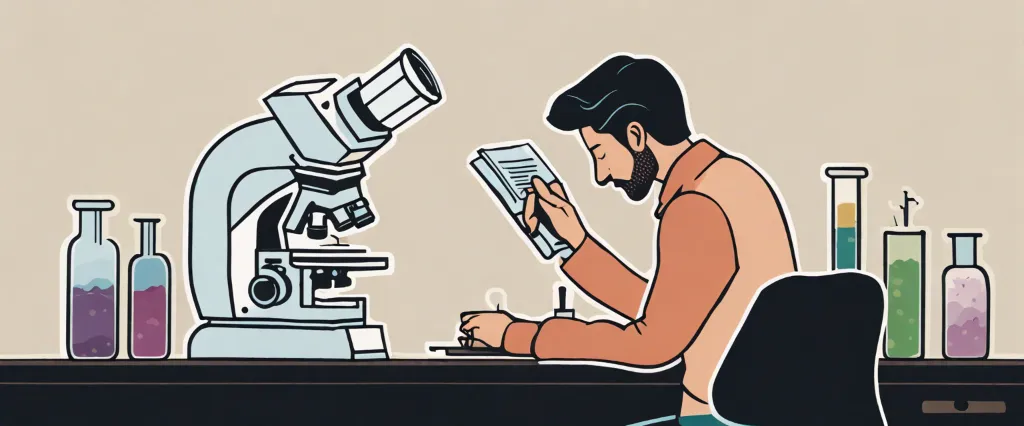
In Siddhartha Mukherjee‘s captivating book, “The Gene: An Intimate History,” he delves into the fascinating world of genetics, exploring its profound impact on humanity’s past, present, and future. As an exceptionally talented writer and physician, Mukherjee gifts readers with a blend of historical narrative, scientific analysis, and personal reflection, painting a comprehensive portrait of the gene’s revolutionary role in shaping our understanding of life. Through his thought-provoking exploration, Mukherjee guides us on a captivating journey through the intricacies of genetics, illuminating the ways in which our genes influence our identity, health, and culture.
Chapter 1: The Code of Life
Chapter 1: The Code of Life, from the book “The Gene: An Intimate History” by Siddhartha Mukherjee, explores the fundamental concepts of genetics and the discovery of the gene. Mukherjee begins by discussing the impact of genetics on his own life, as his family has been afflicted by mental illness for several generations. This personal connection drives his exploration of the intricacies of genes and their significance in understanding life itself.
He delves into the historical attempts to understand heredity through the works of Gregor Mendel and Charles Darwin. Mukherjee explains how Mendel’s experiments with peas laid the foundation for modern genetics, uncovering the concept of dominant and recessive traits that are inherited in a predictable manner.
The author then introduces Friedrich Miescher, who was the first to identify a substance in cells that he named “nuclein,” now known as DNA. This discovery eventually leads to the understanding that DNA contains the genetic information needed to build and regulate living organisms.
Mukherjee discusses the turning point in genetics with the development of the double helix model of DNA by James Watson and Francis Crick. This breakthrough revealed the structure of DNA and its intricate code, which allows for the transmission of traits from one generation to the next.
The chapter also touches upon the discovery of mutations and their role in both beneficial and harmful genetic changes. Mukherjee highlights the tragic circumstances of children affected by genetic diseases and the relentless search for treatments and cures.
In conclusion, Chapter 1 of “The Gene” establishes the foundation of genetics, exploring the historical milestones and scientific discoveries that have shaped our understanding of the code of life. Mukherjee’s personal connection to the subject matter adds a poignant and relatable touch, setting the stage for a comprehensive exploration of genetics throughout the remainder of the book.
Chapter 2: Mendel and the Garden of Peas
Chapter 2 of “The Gene” by Siddhartha Mukherjee, titled “Mendel and the Garden of Peas,” explores the life and work of Gregor Mendel, the father of modern genetics. This chapter delves into Mendel’s experiments with pea plants, which laid the foundation for our understanding of inheritance and genetics as we know them today.
Mendel, an Augustinian monk, conducted his groundbreaking experiments in the mid-19th century. He meticulously cross-pollinated different varieties of peas and observed the traits that were passed down from generation to generation. Through his experiments, Mendel identified seven key traits, including seed coat color, flower color, and plant height, which he referred to as “factors.”
One of Mendel’s significant contributions was the concept of dominant and recessive traits. He discovered that certain traits appeared dominant, while others seemed to recede into the background. He also developed the concept of alleles, which are different versions of a gene that determine specific traits. Mendel proposed that each organism inherited two alleles for each trait, one from each parent.
Moreover, Mendel’s experiments led him to formulate two fundamental principles of inheritance: the Law of Segregation and the Law of Independent Assortment. The Law of Segregation states that each individual has two copies of each gene, which segregate during the formation of gametes. The Law of Independent Assortment suggests that different genes segregate independently of each other during gamete formation.
Although Mendel’s research was groundbreaking, it was largely unappreciated during his time. The scientific community only recognized Mendel’s work posthumously, nearly three decades after his death. His findings provided a framework for future research in genetics and laid the groundwork for the field that would eventually decipher the structure and function of genes.
In summary, Chapter 2 of “The Gene” delves into Gregor Mendel’s seminal experiments with pea plants and his contributions to the field of genetics. Mendel’s discoveries of dominant and recessive traits, alleles, and his formulation of the Laws of Segregation and Independent Assortment established the fundamental basis of inheritance and laid the groundwork for modern genetics.
Chapter 3: The Birth of Genetics
Chapter 3 of Siddhartha Mukherjee’s book “The Gene” delves into the birth of genetics as a scientific field. The chapter begins with the turn of the 20th century, when Mendelian genetics—discovered by Gregor Mendel in the mid-19th century—was largely forgotten, dismissed, or discredited by other prominent biologists of that time.
Mukherjee shines a spotlight on three key figures during this period: William Bateson, Thomas Hunt Morgan, and Hugo de Vries. Bateson, a British biologist, championed Mendelian genetics and played a crucial role in rescuing the idea from oblivion. He worked diligently to prove the power and significance of Mendel’s laws, advocating for the distinctness of Mendelian hereditary traits and phenomena. Bateson coined the term “genetics” in 1905, marking the official birth of this scientific discipline.
Thomas Hunt Morgan, an American scientist, conducted groundbreaking research on genetics while studying fruit flies at Columbia University in the early 1910s. He discovered the first piece of convincing evidence that chromosomes, located in the nucleus of cells, were the carriers of inheritable information. His experiments confirmed the connection between Mendelian genetics and chromosomes, leading to the widespread acceptance of Mendel’s ideas.
Meanwhile, Hugo de Vries, a Dutch botanist, independently formulated similar concepts to explain inheritance based on his studies of plant hybrids. De Vries described the idea of mutations as sudden and dramatic changes in the hereditary material, which became the basis for the field of modern genetics.
Chapter 3 showcases the efforts of these pioneers in reviving, reinterpreting, and expanding the field of genetics. Their work laid the groundwork for the subsequent advancements and breakthroughs that eventually led to our current understanding of genes and heredity.
Chapter 4: The Double Helix

Chapter 4 of “The Gene” by Siddhartha Mukherjee is titled “The Double Helix” and delves into the discovery and understanding of the structure of DNA. This breakthrough was made by British researchers James Watson and Francis Crick, with valuable input from Rosalind Franklin and Maurice Wilkins.
The chapter begins by exploring the race to uncover the structure of DNA, as several scientists, including Linus Pauling and Sir Lawrence Bragg, were actively pursuing this goal. In 1951, Pauling proposed a triple helix model for DNA, but his model was later proven to be incorrect. Meanwhile, at the Cavendish Laboratory in Cambridge, Watson and Crick were investigating the structural arrangement of nucleic acids.
Watson and Crick had access to crucial data from Franklin and Wilkins, who had been conducting X-ray crystallography experiments on DNA fibers. Franklin’s work was instrumental in deciphering the nature of DNA, but she faced challenges due to internal conflicts within her research team. Her unpublished X-ray photographs of DNA’s structure, known as Photo 51, played a key role in the breakthrough.
Watson and Crick famously unlocked the structure of DNA on February 28, 1953. They proposed a model in which DNA consisted of two intertwined helical strands forming a double helix. The bases – adenine, thymine, guanine, and cytosine – before only known by Chargaff’s rules, were paired: adenine with thymine and guanine with cytosine. This insight was groundbreaking, as it provided the key to understanding genetic replication and inheritance.
The chapter also explores the excitement surrounding Watson and Crick’s discovery, as well as the subsequent Nobel Prize awarded to them. However, the contributions of Franklin and Wilkins, often overshadowed, are recognized by Mukherjee, highlighting the collaborative aspect of scientific breakthroughs.
In summary, Chapter 4 of “The Gene” chronicles the dynamic race to uncover the structure of DNA, ultimately leading to the groundbreaking discovery of the double helix model by Watson and Crick, with crucial contributions from Franklin and Wilkins.
Chapter 5: The Human Genome Project
Chapter 5 of “The Gene” by Siddhartha Mukherjee discusses The Human Genome Project, a massive scientific endeavor aimed at sequencing the entire human genome. The chapter follows the project’s ambitious timeline, the political and financial challenges it faced, the scientists involved, and the potential implications for understanding human disease and development.
Mukherjee begins by recounting the project’s beginnings in the late 1980s, when scientists proposed the idea of sequencing the human genome. This sparked immense interest and debate within the scientific community, leading to the formation of a consortium of scientists and a race against private companies vying for their share of the project. The author describes how the project experienced numerous technical hurdles, including the development of new technologies and the establishment of a global network of scientists and laboratories working collaboratively.
As the project progressed, Mukherjee emphasizes the increasingly prominent role of DNA sequencing in various fields, such as forensics, anthropology, and agriculture. The author highlights the ethical concerns surrounding genetic knowledge, including questions of privacy, eugenics, and the specter of discrimination based on genetic predispositions.
Mukherjee also delves into the philosophical debates sparked by the project. He explores the nature versus nurture argument, as well as the concept of cloning and designer babies, contemplating the intimate relationship between genes and identity.
The chapter concludes by drawing attention to the discoveries made through the Human Genome Project and its profound impact on medicine, particularly in terms of diagnosis and treatment. Mukherjee suggests that while our understanding of the human genome has increased exponentially, there is still much to uncover and decipher. Overall, Chapter 5 sheds light on the herculean efforts involved in deciphering the human genome and the immense promise it holds for the future of medicine and society.
Chapter 6: Genes and Disease
Chapter 6: Genes and Disease aptly explores the intricate relationship between genes and the development of diseases. Siddhartha Mukherjee delves into the history of medical genetics, tracing the evolution of our understanding of how genes influence health.
The chapter begins by examining the concept of single-gene disorders, which are caused by mutations in a single gene. Mukherjee presents the renowned example of sickle cell anemia, exploring how a single genetic alteration can cause immense suffering. He then introduces the concept of genetic testing and its potential to identify individuals at risk for these disorders.
Moving forward, Mukherjee explores multifactorial diseases, which arise due to the interaction of multiple genes and environmental factors. He highlights the complexities of studying diseases like cancer and mental illnesses, where genetic and environmental influences intertwine.
The author delves into the history of studying complex disorders, tracing early theories regarding the heritability of mental illnesses such as schizophrenia. He provides insights into groundbreaking studies, such as the discovery of the first genes associated with bipolar disorder.
Mukherjee also addresses the ethical implications of genetic testing and the potential for discrimination based on genetic information. He discusses the case of Huntington’s disease and the difficult decisions individuals face when considering genetic testing due to the disease’s fatal nature.
In summary, Chapter 6 of The Gene explores the diverse ways in which genetic variations contribute to disease development. Mukherjee combines scientific explanations with historical perspectives, highlighting the ongoing challenges and ethical dilemmas associated with genetic testing and diagnosis.
Chapter 7: Genetic Engineering and Ethics
Chapter 7 of “The Gene: An Intimate History” by Siddhartha Mukherjee delves into the ethical implications of genetic engineering. This chapter explores the tension between the potential for scientific advancement and the ethical ramifications of manipulating the human genome.
Mukherjee highlights the case of Huntington’s disease, a genetic disorder that afflicts generations of a family mentioned in previous chapters. He discusses the ethical dilemmas faced by families with the option of undergoing genetic testing to know their genetic fate. The knowledge of one’s predisposition to a disease like Huntington’s can be both a blessing and a curse, as it raises questions about identity, personal responsibility, and reproductive choices.
The chapter also delves into the controversial topic of eugenics. Mukherjee discusses how the field of genetics has been historically tainted by discrimination, with Adolf Hitler and the Nazis using eugenic ideas to justify their atrocities. The author raises concerns about the potential misuse of genetic engineering to create so-called “designer babies” with desirable traits, leading to a new form of discrimination based on genetic superiority.
Furthermore, Mukherjee explores the concept of Genealogy, emphasizing the interconnectedness of all human genomes. He argues that focusing on our common genetic heritage can help promote empathy and ethical responsibility in the field of genetic engineering.
In this chapter, Mukherjee ultimately questions whether it is possible to establish an ethical framework for genetic engineering in a rapidly evolving scientific landscape. He acknowledges the complexity of these issues and the need for ongoing discussions among scientists, ethicists, policymakers, and the public to navigate the ethical frontiers of genetic engineering.

Chapter 8: The Future of Genetics
In Chapter 8 of “The Gene” by Siddhartha Mukherjee, the author explores the future of genetics and the implications it holds for humanity. Mukherjee begins by discussing the concept of genetic engineering, the ability to alter the DNA of living organisms, and its potential applications in various fields.
He highlights the groundbreaking process of DNA sequencing and how it has revolutionized the study of genetics. This progress allowed researchers to identify specific gene mutations responsible for diseases like cancer, opening the door to potential treatments and therapies. Mukherjee goes on to discuss the ethical and moral dilemmas associated with genetic engineering, as it provides the power to manipulate DNA and potentially create “designer babies” or enhance certain traits.
However, the author emphasizes the importance of careful consideration and regulation of these advancements to avoid opening Pandora’s Box. He delves into the history of eugenics, a dark chapter in human history where genetic improvements were pursued, often leading to disastrous consequences.
Mukherjee also explores the potential of gene editing technologies, such as CRISPR, which provides the ability to precisely edit the genome. He discusses the ethical debates surrounding germline editing, in which changes made to an individual’s genome can be passed down to future generations.
The author concludes the chapter by reflecting on the challenges faced by scientists and society as they navigate the future of genetics. He stresses the need for responsible use of these technologies and highlights the importance of public engagement and education to shape the future of genetics in a manner that benefits all of humanity while minimizing potential harm. The future of genetics holds tremendous promise, but it also demands careful consideration of its ethics and long-term consequences.
After Reading
In his book, “The Gene,” Siddhartha Mukherjee takes readers on an insightful journey through the history, science, and impact of genetics. From the simple understanding of inheritance to the complex genetic technologies of today, Mukherjee skillfully explores how genes shape every aspect of our lives. He delves into the revolutionary discoveries made by scientists, the ethical issues surrounding genetic engineering, and the quest for understanding the elusive nature of genes. Ultimately, Mukherjee highlights how genetics has the power to both bring immense progress and raise profound questions about our identity, destiny, and the potential manipulation of life itself. “The Gene” is a thought-provoking and captivating exploration that pushes the boundaries of our understanding and encourages us to ponder the great mysteries that genetics holds.
1. The Emperor of All Maladies: A Biography of Cancer” by Siddhartha Mukherjee – If you enjoyed “The Gene,” you will undoubtedly appreciate Mukherjee’s meticulous exploration of cancer. This Pulitzer Prize-winning book delves into the history, science, and personal stories surrounding this pervasive disease, offering a captivating narrative that enlightens and inspires.
2. “Evolution: What the Fossils Say and Why It Matters” by Donald R. Prothero – Building upon the evolutionary concepts discussed in “I Contain Multitudes,” Prothero’s book offers a comprehensive introduction to the fossil record. From the Cambrian explosion to human evolution, this accessible read sheds light on the undeniable evidence supporting the theory of evolution.
3. The Immortal Life of Henrietta Lacks” by Rebecca Skloot – Providing a thought-provoking intersection of biology, ethics, and race, this book tells the remarkable story behind the HeLa cell line. Skloot masterfully unravels the history of Henrietta Lacks and her unknowing contribution to scientific research, prompting readers to reflect upon the ethical implications of medical discoveries.
4. The Brain That Changes Itself: Stories of Personal Triumph from the Frontiers of Brain Science” by Norman Doidge – In this captivating account, Doidge delves into the remarkable ability of the brain to rewire and adapt. Highlighting groundbreaking research and personal accounts, this book explores the implications of neuroplasticity on various brain conditions, inspiring readers to perceive the brain’s potential in a whole new light.
5. Genome: The Autobiography of a Species in 23 Chapters” by Matt Ridley – Expanding upon the genetic themes in Siddhartha Mukherjee’s “The Gene,” Ridley presents an engaging and accessible journey through the human genome. With 23 chapters dedicated to each of the human chromosome pairs, this book explores the genetics behind various traits and behaviors, providing intriguing insights into the diversity of the human species.



